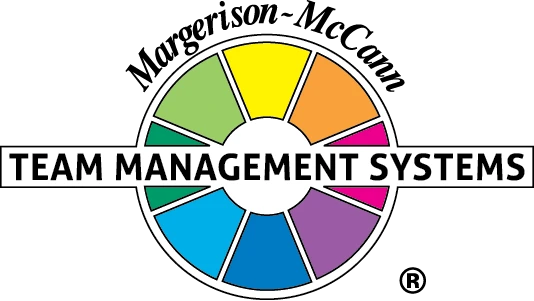
Culture Change in Tokyo
Challenge
Mary Murray’s diverse IT team in Japan had begun to lose sight of its goals. Part of a major international investment bank in Japan, the team had to be very client-focused to stay on top of its game and ahead of competitors.
However, the Tokyo-based division was facing some big challenges: moving into a business growth and investment phase; finding a way to ensure communication among its 300 staff; and addressing overall low self-awareness levels in the group.
“I’d found that staff had become very inwardly focused on the day-to-day work that needed to be done rather than on our clients’ needs”, Murray says. “We realised that to become more strategic and outwardly focused the organisation needed to undergo a major change in culture.”
As the department’s head, Murray decided action should be taken to improve the team’s performance and self-knowledge to ensure it was befitting of a premier global investment firm. She called in the professional help of Cathy Bernatt, President of Creating..., a firm that specializes in leadership training, conflict facilitation and organizational development.
Approach
Identifying that the team came from diverse backgrounds and shared more than 20 nationalities between them, Murray and Bernatt initially set about changing the culture and strategies from within. They decided the best way to change the culture and help the team become more strategic and outward-focused, would be to run an IT division ‘offsite’ – a team session outside their office environment – to focus on improving their personal and professional relationships as well as exploring ways to enhance client service. This would also help the senior team members learn how IT could partner with the broader business to help the organization achieve its goals.
Murray and Bernatt determined that the Team Management Profile (TMP) would provide a common language and path to deeper understanding for staff and their co-workers. Combined with skillful facilitation and interactive team challenges, the TMP would be a winning formula in achieving the offsite goals.
“We felt that the TMP could act as a catalyst for staff to begin to develop strategies to leverage their strengths, and to provide a common language and a path to deeper understanding and connection” Murray says.
Murray says the two main aims of the offsite training day were:
- to raise awareness of a shared responsibility to clients;
- to raise awareness of team members’ shared responsibility to each other.
In the afternoon the focus shifted to:
- raising awareness of the responsibility of staff to each other;
- providing an opportunity for staff to get to know each other better in a highly interactive, relevant and playful environment;
- gaining awareness of one another’s communication preferences and implications; and
- brainstorming strategies on how to leverage knowledge gained of one another’s strengths and preferences to enhance the performance of the team and organization.
Bernatt says it was important to explain how all sections of the company were critical to the final delivery of its product.
"We also looked at the work functions each team does well, and the ones that they currently didn’t do so well.”
She found that the team plots of the IT division reflected the norm data collected by Team Management Systems from different industries, professions, countries and regions.
“We looked at a whole division and then sub-group analysis, for example, in the management team, there was no one with a major role in the Upholder- Maintainer (conservative, loyal, supportive) or Controller- Inspector (detail oriented, introverted, practical) Team Management Wheel roles... but this doesn’t mean there is no competency."
Managing the logistics
Administering a TMP for a division of almost 300 people presented some interesting logistical challenges for Bernatt, as did holding the interest of the 184 attendees present at the offsite training day. “Processing the TMP in such a large group was a challenging process, but it was well worth it,” she says. By allowing particiapnts to access their personal TMP reports prior to the offsite, Bernatt was able to stimulate and prepare her large audience, which created quite a buzz of interaction and sharing of TMP results in the office. She then delivered a distribution analysis of team results to the team and sub-teams.
“Once we’d administered the TMP to all 300 members of the division, there were only two people that questioned their profile. One person had answered the survey in the context of his current role and not his preferences, and for the other, it may have been the first time to ‘look in the mirror’. Interestingly, this person's colleagues agreed with the insights covered in their profile report,” Murray says.
On the morning of the offsite training, the senior management team – including the managing director, business line leaders and global management - presented their key messages, by video from overseas offices.
“The rationale for this was that there is often a gap in perceptions of the (senior management team) and the employees,” Bernatt says. “So we discussed the global goals of the organization and the idea that each team member should understand how each of the activities they do every day specifically contributes to the overall division and the organization’s strategy,” added Murray. “We came up with 190 improvement suggestions - and as everyone has to do one of these, it will make a big change to the organization.”
Outcome
Across the organization, the results showed that the Advising (dark green) function was the least represented.
“I asked for examples and stories about what happens every day and the response was ‘we jump in with minimal information, don’t engage the client. I could see that a lot of resources were wasted and that staff really needed to stop and ask questions.”, Bernatt says.
At the offsite, the next step was getting people to understand their differences and interact in a healthier way, which involved individuals examining their own strengths and liabilities, then looking at these collectively in groups and discussing how successful communication could occur.
“We followed with an exercise where people gave feedback to their colleagues on how to improve or do something better – for every complaint they made, they had to come up with a concrete suggestion on how to improve things,” Bernatt says.
Since administering the TMP training session, Murray, who is now Managing Director of the IT division of another global financial firm, says her former organization’s culture began to change for the positive as a result of the offsite and the TMP.
“The offsite was instrumental in starting the change process. Over time we started to create a shared culture of accountability and to create an environment and culture you want to live within.”
Murray also pointed out a significant outcome of the programme was the generation of over 190 improvements suggestions. “Achieving this outcome means the bank is better placed to direct resources to where it is needed and will help them move forward to the next stage of the development process,” says Murray.
On a personal note, Murray says her TMP has also been a useful tool to assist her overall career goals. “It has sticking power!”

